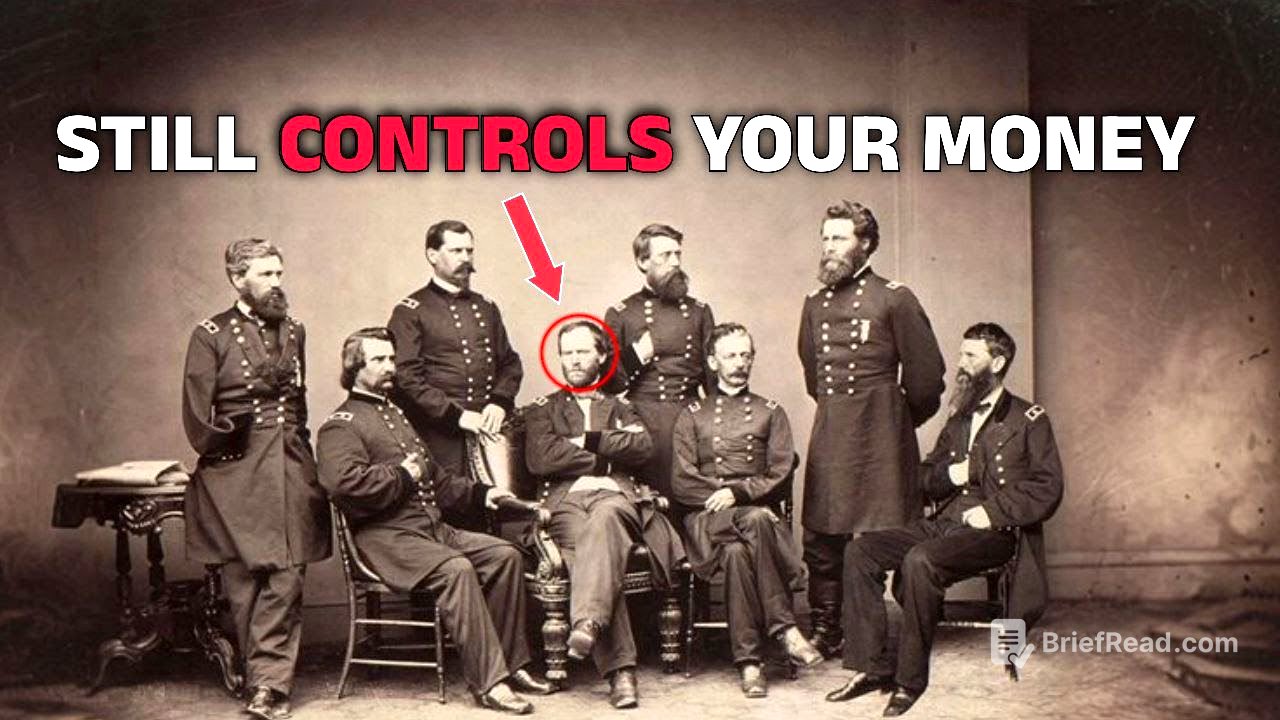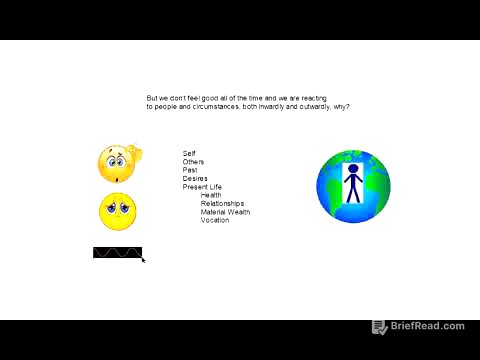TLDR;
This video explains the hidden rules of money that have shaped wealth for centuries, determining who prospers and who struggles. It covers Gresham's Law (bad money drives out good), the Cantillon Effect (new money benefits early receivers), and Pareto's Principle (the 80/20 rule), revealing how these laws influence modern finance, create inequality, and persist through economic crises. The video also explores how central banking and digital currencies reinforce these patterns, and it advises viewers on how to position themselves to benefit from these laws by owning productive assets and understanding the flow of money.
- Gresham's Law: Bad money drives out good, leading to devaluation of savings and speculation.
- Cantillon Effect: New money enriches those closest to the source (banks, corporations) before it reaches workers and savers.
- Pareto's Principle: 80% of results come from 20% of participants, concentrating wealth in a minority.
Introduction: The Invisible Laws of Money [0:00]
The video introduces the concept of invisible laws of money that have been silently shaping wealth for over 300 years. These laws dictate who climbs the economic ladder and who remains stagnant, and they are not explicitly taught or written in constitutions. The presenter poses the question of why wealth consistently flows in a specific direction, with the rich staying rich, the poor struggling, and the middle class falling behind despite their efforts. It's argued that this isn't due to luck or conspiracy, but rather the operation of these long-standing, unseen laws of money.
Gresham's Law: Bad Money Drives Out Good [0:41]
Gresham's Law states that "bad money drives out good money." Historically, when rulers mixed cheaper metals into gold and silver coins, people hoarded the pure coins and spent the debased ones, eventually causing the good money to disappear from circulation. This principle applies today with credit, debt, and trust replacing metals. When central banks flood the system with cheap money through low interest rates and easy debt, it discourages saving and encourages speculation. Those closest to the money printer, such as banks and corporations, benefit the most, while the value of money is diluted by the time it reaches the average person through higher prices and loans.
The Cantillon Effect: Uneven Distribution of New Money [1:45]
The Cantillon Effect, named after 18th-century economist Richard Cantillon, explains that new money entering an economy doesn't affect everyone equally. Instead, it flows unevenly, enriching some while eroding the wealth of others. Those closest to the source of new money, such as investors and corporations, gain wealth rapidly as stock markets rise and property prices surge. However, workers and savers experience rising prices before their wages catch up, feeling the effects of inflation sooner. The Federal Reserve's actions after 2008, where trillions were added to its balance sheet, exemplify this effect, with stocks tripling and the top 1% experiencing a wealth surge while median household income remained stagnant.
Pareto's Principle: The 80/20 Rule and Wealth Inequality [3:39]
Pareto's Principle, or the 80/20 rule, highlights that in any system, 80% of the results come from 20% of the participants. Applied to wealth, this means that 20% of the people control 80% of the resources, and this imbalance tends to grow over time. This principle is evident in various aspects of society, from land ownership to corporate profits and even attention distribution. The system rewards understanding of money rather than effort, and those who don't understand these rules lose wealth slowly through inflation, taxes, and poor timing. Gresham's Law, the Cantillon Effect, and Pareto's Principle together form the foundation of modern finance, perpetuating inequality.
The Evolution of Money Laws into National Policy [5:43]
By the 19th century, the laws of money began to shape nations, with industrial revolutions, trade networks, and colonial systems operating under the same principles. Control over the money supply meant control over outcomes, and those who received new money first built empires. Central banking formalized these ideas into official policy, starting with the Bank of England in 1694. This model spread, with central banks managing demand, stimulating economies, and funding governments through credit. The Cantillon Effect became a deliberate strategy, with banks and corporations growing larger while savers absorbed inflation.
Modern Finance and the 1971 Shift [7:13]
The year 1971, when the United States left the gold standard, marked a significant shift as money became pure credit. Debt and dollars became synonymous, and their supply expanded together. Gresham's Law predicted the subsequent rise in inflation and speculative investment, while the Cantillon Effect widened the wealth gap. Policy responses since 1971, such as the 2008 financial crisis and the 2020 stimulus checks, have followed the same pattern, with asset prices recovering while workers experience delayed wage growth and reduced purchasing power due to inflation.
Positioning Yourself Within the System [8:20]
To navigate this system, one must think like the early receivers of money and own assets that benefit from the flow of new money, such as businesses, equities, and productive property. Wages alone fall behind because they adjust after prices rise, and the system rewards ownership rather than labor. The Federal Reserve's actions, such as cutting rates and launching asset purchases, benefit corporations and investors while households see their savings earn less and housing costs rise. Data shows that the top 1% share of US wealth has increased significantly, while the bottom 50% have gained little, with each recession accelerating this shift.
Global Implications and Declining Trust [9:50]
These dynamics are not limited to the United States but operate globally, with low interest rates in Japan enriching corporations and monetary unions in Europe transferring wealth toward core economies. When trust declines, Gresham's Law dictates that people hoard scarce assets like land, commodities, and digital stores of value. Policymakers face a trap where expansion lowers quality and triggers a flight to safety, while contraction slows growth. The response to these laws determines individual outcomes, with those relying on wages and savings being the last receivers and those owning productive assets being closer to the source.
The Future: Digital Currencies and De-Dollarization [12:08]
The world now runs on code, but the same money laws still apply. Central banks are building CBDCs, which extend control over money issuance and access. Private tokens follow similar patterns, with early insiders benefiting from large allocations. De-dollarization debates highlight how the issuer of the dollar benefits first, driving diversification into alternative currencies. The system is sustained by faith in laws written centuries ago, and understanding these laws is crucial for navigating the next cycle.
Navigating the Future: Proximity and Awareness [13:59]
The future depends on how long confidence in the system holds. To navigate the next cycle, one should study proximity, own assets that benefit from early liquidity, and diversify across forms of money. History shows that these transitions repeat, and awareness of these laws is essential for making informed decisions. By understanding these laws, individuals can stop reacting and start planning, positioning themselves to benefit from the system rather than being victimized by it.









